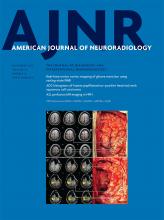We thank Lecler et al for their insightful comments and for sharing their opinion on the use of sonography in patients with open globe injuries. Many valid points have been raised about the limitations of CT, with which we agree.
CT has evolved as the imaging technique of choice for evaluating patients with polytrauma in the United States. This imaging technique is widely used in emergency departments and trauma centers.
CT of the face detects not only globe injuries and radiopaque foreign bodies but also intraorbital soft-tissue injuries and orbitofacial fractures, which have major treatment implications. The chaotic environment of the trauma resuscitation units dealing with patients with various forms of blunt and penetrating trauma makes it impractical for ophthalmic sonography to be performed in all emergency settings. The procedure requires both specialized ophthalmic sonography equipment and expertise in its interpretation, which are not available around the clock in many trauma centers. In an emergent situation, CT and clinical examination provide ample information to decide whether a globe injury requires exploration. Our study shows that this information alone also provides prognostic information.
There is still not enough evidence to show that sonography can be performed without inducing pressure on the globe. Pressure on the globe risks the extrusion of intraocular contents and potentiates endophthalmitis or suprachoroidal hemorrhage, all of which could further damage the already injured globe. Hence, the experts at the University of Maryland Shock Trauma center avoid sonography in patients with suspected globe injury in the acute setting.
Ophthalmic sonography does have a role in select cases to answer specific questions regarding ocular surgical planning and follow-up after globe repair. There is evidence to show that sonography has a major role in detecting complex pathologies that develop after globe repair, specifically differentiating a retinal detachment from a choroidal detachment. The findings from sonography provide useful information for planning management and predicting visual outcome. Andreoli et al1 reported all these important factors in patients after globe repair. Our study differs in that it mainly deals with patients before globe repair and uses the limited preoperative clinical data available in the acute trauma setting.
In summary, the authors have made a compelling argument for sonography to determine prognostic information after globe repair. The safety of ophthalmic sonography should be established before using it in patients prior to globe repair. Ultimately, ophthalmic sonography is an effective tool in the follow-up of patients after globe repair to identify various traumatic pathologies, plan surgical repair, and predict patient outcomes.
- © 2017 by American Journal of Neuroradiology







